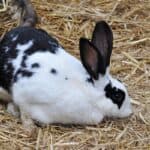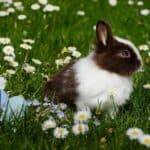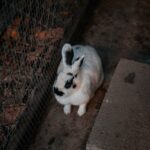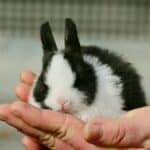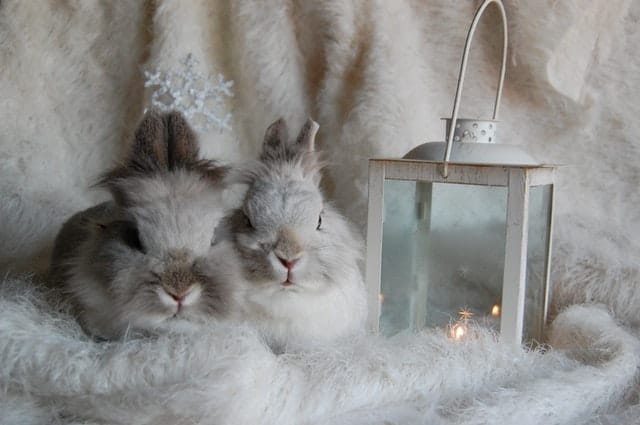
The jersey wooly rabbit is a small ball of fur. This type of rabbit is gentle, docile and affectionate in nature.
Do you want to know its history and its care? , keep reading.
History and origin of the Jersey Wooly rabbit
The wooly jersey rabbit was first introduced to the American Rabbit Breeders Association (ARBA) in 1984 by rabbit breeder Bonnie Seeley of High Bridge, New Jersey. This breed was developed by crossing the French Angora rabbit with a Dutch dwarf rabbit and the result was a bunny with a wool coat. This breed was recognized by the ARBA four years later, in 1988, as the Jersey wool rabbit and is now one of the most widely exhibited rabbits at US shows, as well as a favourite pet.
Physical characteristics of the Jersey Wooly rabbit
It is a small breed of rabbits, weighing between 1 and 1.5kg. Its body is compact and muscular, with small and erect ears. The head is square and bold. The hair is woolly. Unlike Angora rabbits , this one is much easier to care for and keep in good condition.
Jersey Wooly Rabbits Character
The Jersey Wooly rabbit is a kind, docile and affectionate type of rabbit. You are usually very curious so you won’t hesitate to explore your home over and over again.
What do Jersey Wooly rabbits eat? Diet and feeding.
Jersey Wooly rabbits, like any other breed of rabbit, have a diet composed primarily of good quality hay. Hay occupies 70-80% of their diet and the rest is a combination of feed, green leaves and some vegetables or fruits. Before feeding a rabbit, be sure to research what foods are healthy for the animal, as there are some vegetables and fruits that can be very harmful to rabbits.
How do I care for the coat of my Jersey wooly rabbit?
It must be brushed once a day in the molting season. For this we can use a special comb that is the Furminator, widely used for brushing dogs and cats since it removes much of the dead hair.
They are not animals that get dirty frequently, but if this happens we will pass them a wet wipe or a towel moistened with warm water to remove any dirt that may have embedded in their beautiful fur. Remember that it is not recommended to bathe rabbits.
Common health problems in this breed of rabbits
Like cats, rabbits are very clean animals and regularly groom themselves by licking their fur. Consequently, the hair they eat can accumulate inside their stomachs, forming so-called hairballs .
Symptoms include poor appetite, decreased amount of stool, and reduced mobility in general. If you suspect that your jersey wooly rabbit has these symptoms, see an exotic veterinarian immediately.
Rabbits must also be dewormed. Also be sure to routinely check a rabbit’s mouth.
Most popular colors
This breed of rabbit is recognized by the ARBA in six different color groups. The Agouti group has chestnut, chinchilla, opal and squirrel colors; the Broken group presents any recognized variety in combination with white; and the Self group consists of black, blue, chocolate, lilac, BEW (blue-white-eyes), and REW (red-eyes-white). The Shaded group features a tortoise shell, blue tortoise shell, saber point, seal, Siamese sable, and smoke pearl; Tan Pattern group consists of black otter, blue otter, smoke pearl sable, sable sable, black silver sable, blue silver sable, chocolate silver sable, and lilac silver sable; and finally, the AOV group (any other variety) presents a variety of white pointed black and white pointed blue.
Where can I get a rabbit of this breed?
Currently there are many associations and shelters for rabbits and other animals. It is advisable to look for the closest places to our locality and take a look to see if they have any Jersey Wooly for adoption. There are also many web or Facebook pages where you can contact these rabbit breeders associations to find out if they will soon have one available to adopt. If you prefer to buy rather than adopt, we recommend that you do so in a specialized kennel and not in pet stores.
The Jersey Wooly rabbit breed as a pet
The Jersey Wooly breed is known to be a very affectionate type of rabbit with those who deal with them. They are excellent as pets, especially in families with children of all ages. In any case, the youngest children should be supervised and taught how to handle these little animals.

